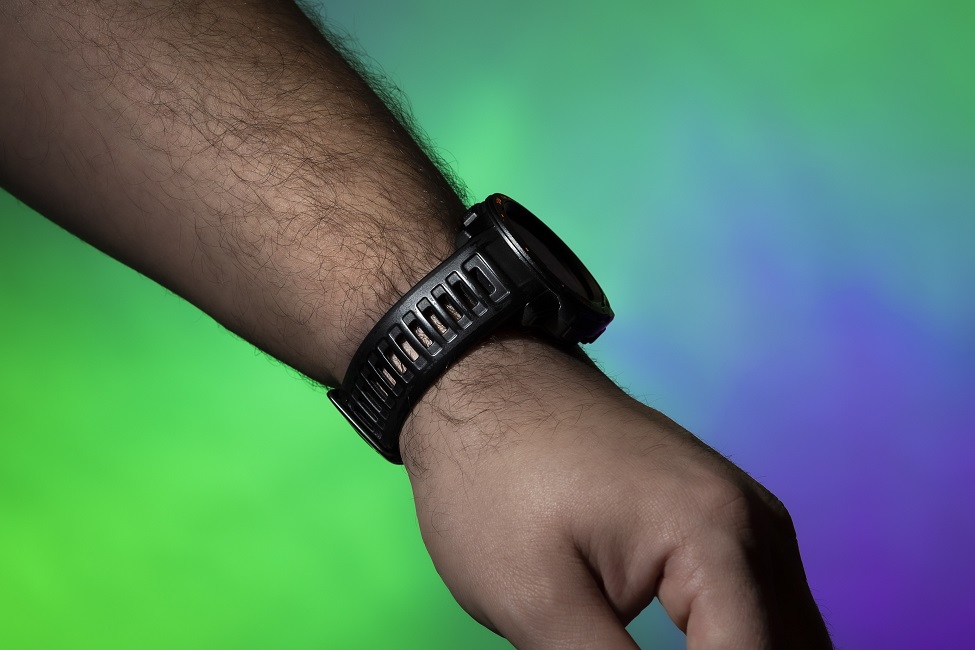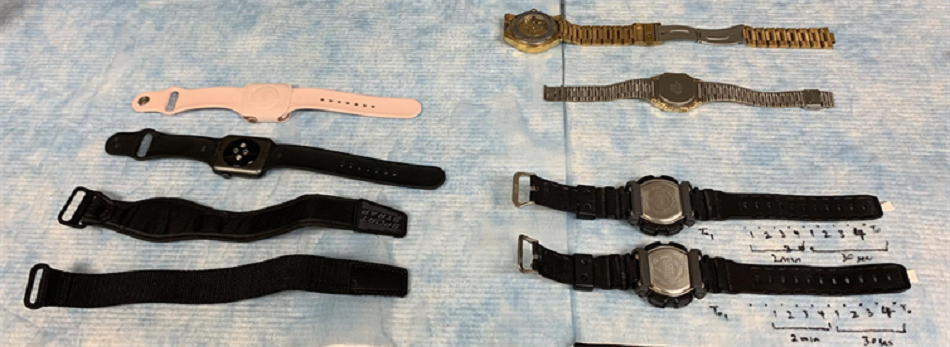FAU Study Reveals Common Wristbands ‘Hotbed’ for Harmful Bacteria

Researchers found rubber and plastic wristbands had higher bacterial counts than metal ones. (Photo by Alex Dolce)
The COVID-19 pandemic took disinfecting to new heights. Now, a new study examining a commonly used item might convince you not to let your guard down just yet.
Researchers from Florida Atlantic University’s Charles E. Schmidt College of Science tested wristbands of various textures to determine their risk for harboring potentially harmful pathogenic bacteria. Despite being worn daily, routine cleaning of wristbands is generally overlooked or simply ignored.
For the study, researchers tested plastic, rubber, cloth, leather and metal (gold and silver) wristbands to see if there is a correlation between wristband material and the prevalence of bacteria. They investigated the hygienic state of these various types of wristbands worn by active individuals and identified the best protocols to properly disinfect them.
Using standard microbiological assays, researchers looked at bacterial counts, type of bacteria and their distribution on the wristband surfaces. They also conducted a bacteria susceptibility assay study screening the effectiveness of three different disinfectant solutions: Lysol™ Disinfectant Spray; 70 percent ethanol, commonly used in hospitals and alcohol wipes; and a more natural solution, apple cider vinegar.
Results of the study, published in the journal Advances in Infectious Diseases , suggest you may want to “go for the gold” or silver the next time you purchase a wristband. Nearly all wristbands (95 percent) were contaminated. However, rubber and plastic wristbands had higher bacterial counts, while metal ones, especially gold and silver, had little to no bacteria.
“Plastic and rubber wristbands may provide a more appropriate environment for bacterial growth as porous and static surfaces tend to attract and be colonized by bacteria,” said Nwadiuto Esiobu, Ph.D., senior author and a professor of biological sciences in the Charles E. Schmidt College of Science.
The most important predictor of wristband bacteria load was the texture of wristband material and activity (hygiene) of the subject at sampling time. There were no significant differences between males and females in the occurrence or distribution of the bacteria groups.
Bacteria found in the study were common skin residents of the genera Staphylococcus and Pseudomonas, and intestinal organisms of the genera Escherichia, specifically E. coli. Staphylococcus spp was prevalent on 85 percent of the wristbands; researchers found Pseudomonas spp on 30 percent of the wristbands; and they found E. coli bacteria on 60 percent of the wristbands, which most commonly begins infection through fecal-oral transmission.
The gym-goer showed the highest staphylococcal counts, which emphasizes the necessity of sanitizing wristbands after engaging in rigorous activity at the gym or at home.
Staphylococcus aureus is a type of bacteria found on human skin, in the nose, armpit, groin or other areas that cause a wide variety of clinical diseases. Pseudomonas spp., commonly in the environment, can cause infections in the blood, lungs (pneumonia) or other parts of the body after surgery. Enterobacteria are a large family of bacteria including many of the more familiar pathogens such as E. coli and Salmonella.
“The quantity and taxonomy of bacteria we found on the wristbands show that there is a need for regular sanitation of these surfaces,” said Esiobu. “Even at relatively low numbers these pathogens are of public health significance. Importantly, the ability of many of these bacteria to significantly affect the health of immunocompromised hosts indicates a special need for health care workers and others in hospital environments to regularly sanitize these surfaces.”
Findings from the study showed that Lysol™ Disinfectant Spray and 70 percent ethanol were highly effective regardless of the wristband material with 99.99 percent kill rate within 30 seconds. Apple cider vinegar was not as potent and required a full two-minute exposure to reduce bacterial counts. While these common household disinfectants all proved at least somewhat effective on all materials (rubber, plastic, cloth and metal), antibacterial efficacy was significantly increased at two minutes compared to thirty seconds.
Different disinfectants, depending on their active ingredients, kill bacteria in different ways, such as by disrupting cell membrane integrity, altering or removing proteins or interfering with metabolic activities.
“Other potential forms of bacterial transmission and facilitation of infection, such as earbuds or cell phones, should be similarly studied,” said Esiobu.
Study co-authors are Joseph Mendonca; Belen Wertheimer; Daynalee Dixon; Bodhi Stone; and Karim Dawkins, FAU undergraduate and graduate students within the Microbial Biotechnology Laboratory, Department of Biological Sciences, Charles E. Schmidt College of Science; and Miranda Christian, a former reporter in West Palm Beach.

Researchers tested plastic, rubber, cloth, leather and metal (gold and silver) wristbands to determine if there is a correlation between wristband material and the prevalence of bacteria.
-FAU-
Tags: science | faculty and staff | research | students